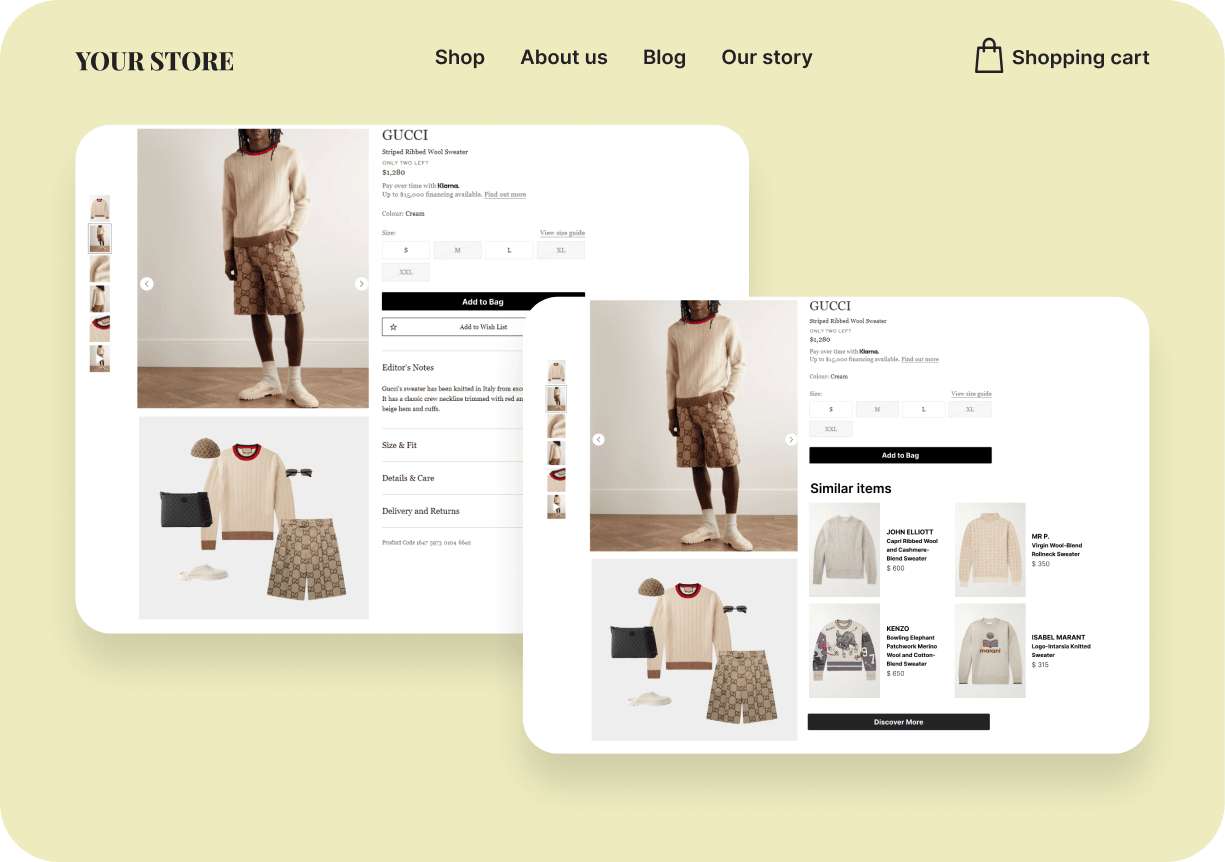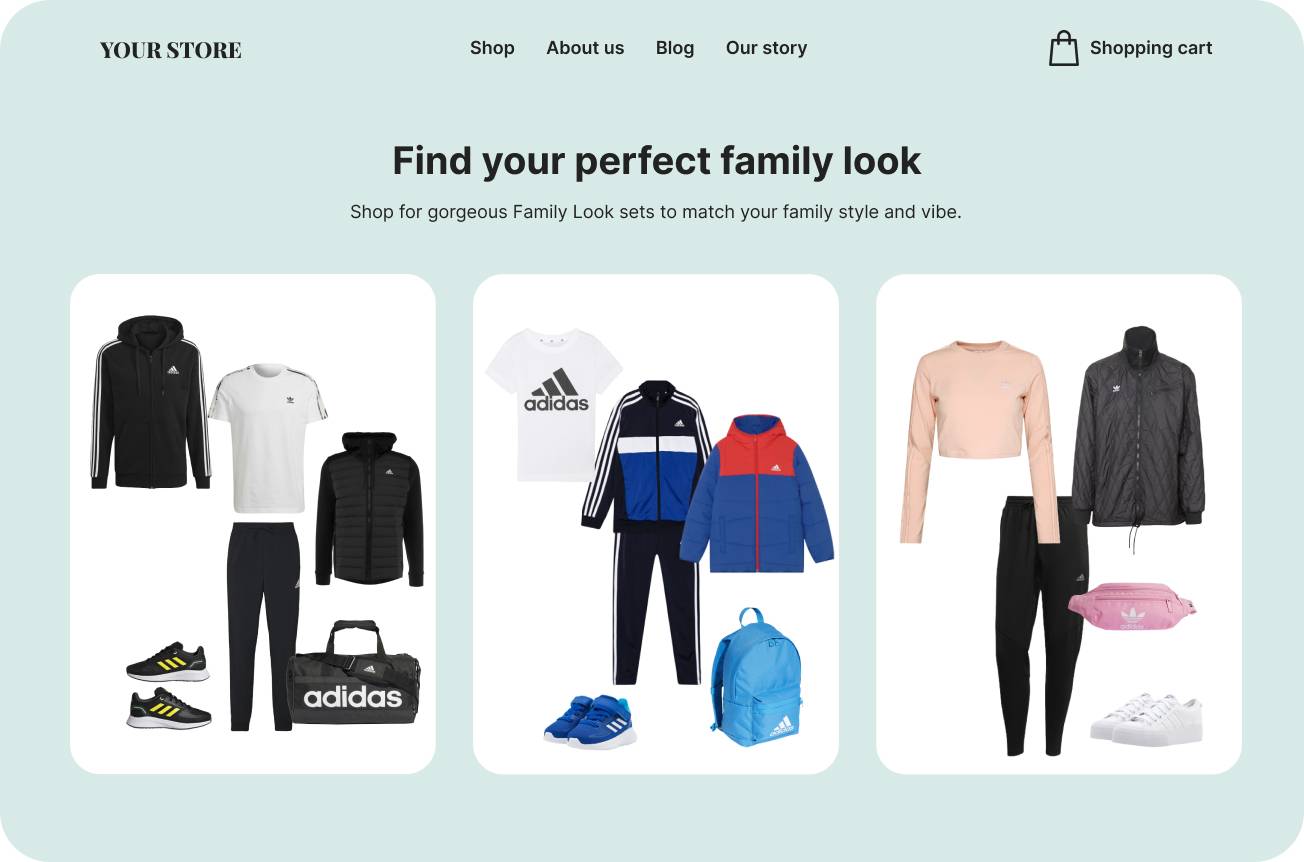Do you also feel like every other conversation starts with “in this economy” or “in this job market” these days? The role of digital merchandisers is undergoing a seismic shift as well, and it’s driven by the integration of AI technologies in ecommerce. Without diving into the philosophical questions of humans vs AI, let’s try to break down how new tech is impacting digital merchandising and see if there’s a win-win scenario here.
Current Challenges in Fashion Merchandising
First, let’s look at the merchandising world as we know it, without AI. Traditionally, fashion merchandising demanded extensive manual labor, from product management to content curation. Now, many digital merchandisers and stylists spend countless hours managing inventory, analyzing trends, assembling promotional selections, outfits etc, going back and forth coordinating with various teams such as marketing, design, IT, and customer service to ensure a seamless online shopping experience. It often leaves little room for strategic or creative pursuits. The pressure to keep pace with trends while managing vast catalogs only added to the challenge.
How AI is Changing the Game
You must’ve seen this tweet:

When it comes to merchandising, AI-powered solutions assist with both creative and boring mundane tasks. You get fresh ideas, save time, but ultimately, you’re still the curator.
However, embracing the changes takes time, and we are discovering the impact gradually.
According to Businessoffashion, 73% of fashion executives said generative AI will be a priority for their businesses in 2024, but only 28% have already experimented with it in their creative processes for design and product development.
Let’s discuss the changes AI brings to the merchandising world one by one.
Improving Content Quality:
Merchandising is all about visuals. AI improves the quality of product images, helps non-designers come up with visuals that look professional, and creates engaging virtual content, making digital displays more appealing.
AI image recognition is on a new level, and it helps merchandisers easily deal with large quantities of visual content.
Streamlining Workflow with AI Automation:
AI-powered tools like GardeRobo have significantly reduced the time spent on tasks related to product content creation and inventory management. By automating processes, digital merchandisers can style entire catalogs within minutes, without additional manpower. Smart Search helps merchandisers sift through inventories and find anything without having to categorize or tag items. You type in “blue sneakers with brown laces” and the Smart Search finds what you need. Then, you can play with the results as much as you wish.
Enhancing Productivity and Career Advancement:
Automation frees up digital merchandisers to focus on strategic and creative endeavors, fostering job satisfaction and opportunities for career growth. It’s a skill you add to your resume and a short path towards metrics that show how much you’ve given to the company.
A legendary sportswear brand’s digital merchandising team previously spent significant time manually updating e-commerce product recommendations. With GardeRobo's AI powered tool, they've been able to automate this process, saving up to 98% of their time.
Personalization and Customer Experience:
AI enables personalized recommendations based on customer preferences, purchase history, and browsing behavior. This level of customization enhances the overall shopping experience, leading to increased customer satisfaction and loyalty.
Personalization is a key feature when you work in the luxury market. In his interview to Businessoffashion, MyTheresa CEO Michael Kliger emphasizes the importance of competing “not on price, not on discount, but to compete on newness, on exclusivity and combine that with superior service for our best customers”. High-end brands have customers who require a higher level of personalized approach. This comes with immense resources spent on customizing clients’ looks one by one. Now imagine delegating this job to AI while you just watch and curate the process, managing multiple clients at a time.
Regardless of the niche you’re working with, both conversion rates and average order value grow significantly when the store knows what your customer wants.
At the same time, another sportswear giant, using GardeRobo, discovered that over 50% of their online store's total revenue came from the 10% of shoppers who interacted with recommendations powered by AI.
Optimal Inventory Management:
AI solutions optimize inventory management by highlighting products within generated outfits that require attention. Real-time updates and analytics empower merchandisers to make informed decisions, aligning inventory with customer demand and market trends. There are no more “back of the store, bottom shelf” items that stay forgotten. AI can find those items and bring them back to you with suggestions on how to sell those.
Continuous Learning and Adaptation:
You learn, we learn. AI platforms like GardeRobo are trained by experienced merchandisers and stylists. They never stop learning and can easily adapt to your brand DNA as well as your personal style.
The field of AI is constantly evolving, introducing new technologies and methodologies. Digital merchandisers need to engage in continuous learning to stay abreast of advancements in AI and adapt their skills accordingly to remain competitive in the industry.
“One Stop Shop” Solutions:
Division of labor was a great invention that allowed the world economy to take a huge leap. But you don’t need to divide and diversify the tasks that AI helps you with. Just a few clicks here, a few clicks there, and you get a design tool, a search engine, and tons of other features in one place. A lot of mundane tasks that you used to delegate or do for others are now automated and all on a single platform. Your company no longer pays hundreds of SaaS vendors and focuses on a couple of key ones instead.
So, How Do You Save Your Job?
In short, it will, but only if you don’t keep up. Just like with any other industry, AI is optimizing the workflow, and in the near future many companies will need significantly less hours of your work. But they’ll also need someone who can make those hours count. We’re far from the point where technology replaces humans. For now, it just helps us.
The integration of AI in fashion merchandising presents both challenges and opportunities for digital merchandisers. By embracing AI technologies, professionals can enhance efficiency, productivity, and creativity, ensuring their relevance in a digitally-driven landscape. Rather than displacing human expertise, AI serves as a tool to augment and elevate the role of digital merchandisers in the evolving fashion industry. With a keen focus on personalization, ethics, and continuous learning, digital merchandisers can navigate the AI-driven future with confidence and adaptability.











